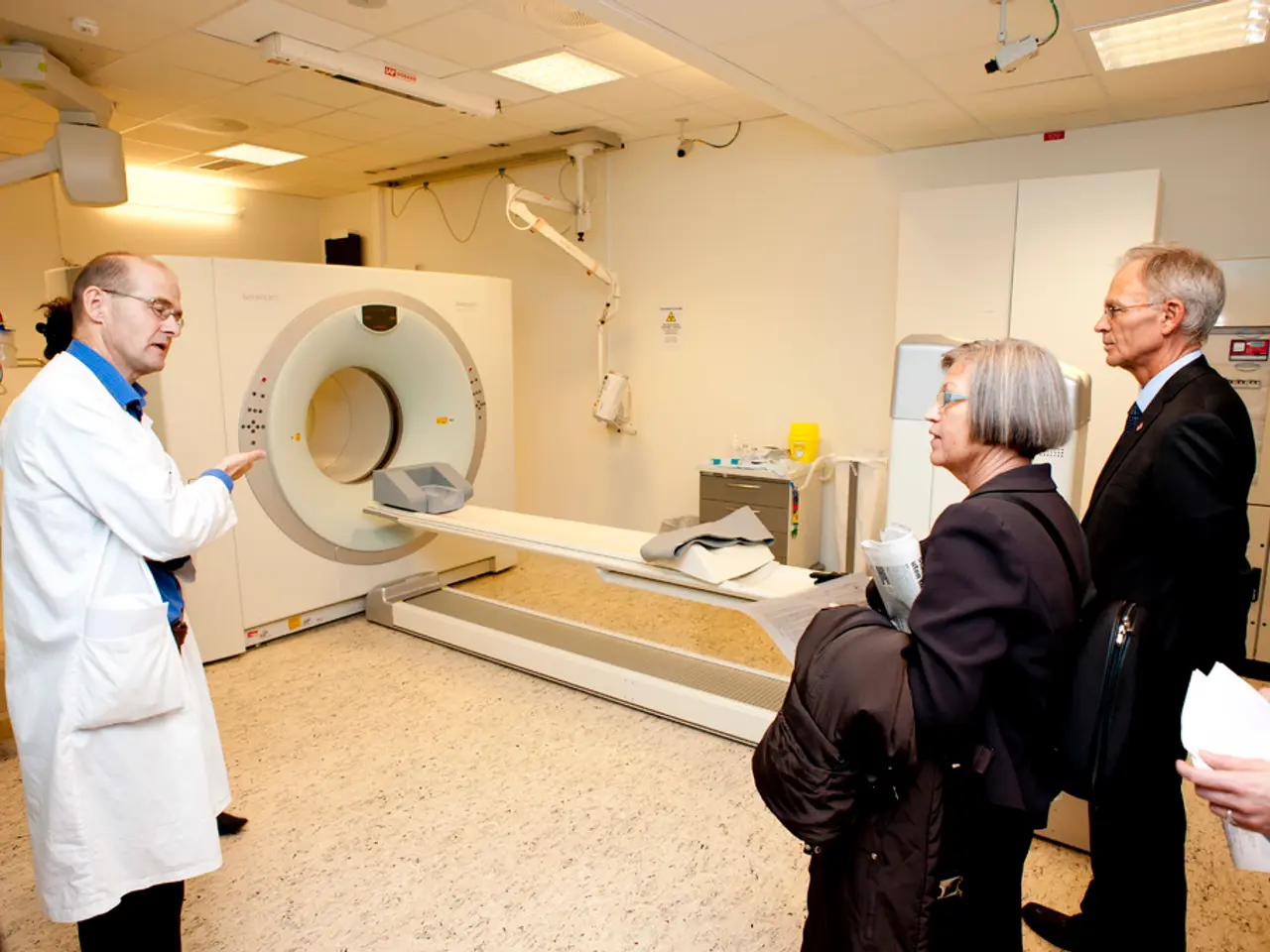MRI Imaging in Multiple Sclerosis: An In-depth Look, Classifications, and Additional Information
Multiple Sclerosis (MS) is a complex neurological condition that affects the central nervous system. One of the key tools used in diagnosing and monitoring MS is the Magnetic Resonance Imaging (MRI) scan.
The Role of MRI Scans in MS Diagnosis
MRI scans are a non-invasive imaging test that healthcare professionals use to produce images of the body's soft tissue and organs without using radiation. They are instrumental in the diagnosis of MS, as they can identify lesions that occur due to MS, including white matter inflammation, demyelination, and scarring or sclerosis.
Distinguishing MS Types through MRI Scans
The appearance of MS lesions on an MRI scan varies depending on the type of MS.
Clinically Isolated Syndrome (CIS)
In CIS, one or few discrete lesions are typically seen on MRI, usually T2/FLAIR hyperintense, well-demarcated, and ovoid. These lesions often involve periventricular, juxtacortical, or infratentorial white matter.
Relapsing-Remitting MS (RRMS)
RRMS is characterised by multiple T2/FLAIR hyperintense lesions, which may enhance with gadolinium during active inflammation (acute lesions). These lesions tend to be discrete and ovoid, perivenular, commonly involving the periventricular areas, corpus callosum, juxtacortical regions, and brainstem.
Primary Progressive MS (PPMS)
PPMS typically presents with fewer but more diffuse lesions than RRMS. Lesions may be less conspicuous on MRI and may show less active inflammation. There may be more prominent spinal cord involvement.
Secondary Progressive MS (SPMS)
SPMS shows increasing lesion load with more confluent, larger, and chronic plaques compared to RRMS. There is often significant brain and spinal cord atrophy reflecting neurodegeneration.
Monitoring MS with MRI Scans
MRI scans are also used to monitor treatment response in MS patients. Over 90% of people with an MS diagnosis have it confirmed by an MRI scan. With RRMS, an MRI scan will show at least two separate areas of damage that have occurred at different points in time. T-2 scan lesions appear as bright spots, while T-1 weighted scans without gadolinium can indicate areas of permanent nerve damage.
T-1 weighted scans with gadolinium can help identify new or growing lesions in MS. Spinal cord imaging can show damage at different points in time and identify MS lesions in the spinal cord.
In summary, MRI scans play a crucial role in both confirming MS diagnosis and monitoring treatment response. They provide valuable insights into the type and activity of MS, helping healthcare professionals to tailor treatment plans and predict the clinical course of the disease.
[1] Filippini N, Sormani MP, Fazio F. Multiple sclerosis: MRI features and their clinical implications. Lancet Neurol. 2015;14(1):87-98. [2] Polman CH, Reingold SC, Banwell B, et al. Diagnostic criteria for multiple sclerosis: 2010 revisions to the McDonald criteria. Ann Neurol. 2011;70(5):624-637. [3] Vukusic S, Connick JE, Kutzelnigg A, et al. MRI biomarkers of neurodegeneration in multiple sclerosis. Nat Rev Neurol. 2018;14(5):285-298. [4] Miller DH, Ashman EV, Arnold DL, et al. Gadolinium-based contrast agents in multiple sclerosis: a systematic review and meta-analysis. Lancet Neurol. 2012;11(6):563-573. [5] Rudick RA, Arnold DL, Banwell B, et al. MRI features of multiple sclerosis: a practical approach. Lancet Neurol. 2017;16(1):21-34.
- The Magnetic Resonance Imaging (MRI) scan, a non-invasive medical-condition diagnostic tool, is pivotal in the identification of lesions related to Multiple Sclerosis (MS), including white matter inflammation, demyelination, and scarring or sclerosis.
- In Clinically Isolated Syndrome (CIS), MRI scans often reveal one or few discrete lesions, usually T2/FLAIR hyperintense, well-demarcated, and ovoid, typically appearing in periventricular, juxtacortical, or infratentorial white matter.
- Relapsing-Remitting MS (RRMS) is characterized on MRI scans by multiple T2/FLAIR hyperintense lesions, which may enhance with gadolinium during active inflammation, and tend to be discrete and ovoid, perivenular, commonly involving the periventricular areas, corpus callosum, juxtacortical regions, and brainstem.
- Primary Progressive MS (PPMS) typically shows fewer but more diffuse lesions than RRMS on MRI scans, with lesions being less conspicuous and may show less active inflammation, and usually features prominent spinal cord involvement.
- Secondary Progressive MS (SPMS) reveals an increasing lesion load with more confluent, larger, and chronic plaques compared to RRMS, and there is often significant brain and spinal cord atrophy reflecting neurodegeneration.
- With MRI scans, healthcare professionals can monitor treatment response in MS patients, as they provide insights into the type and activity of MS, helping to tailor treatment plans and predict the clinical course of the disease, including identifying new or growing lesions and observing damage at different timepoints in the spinal cord.




